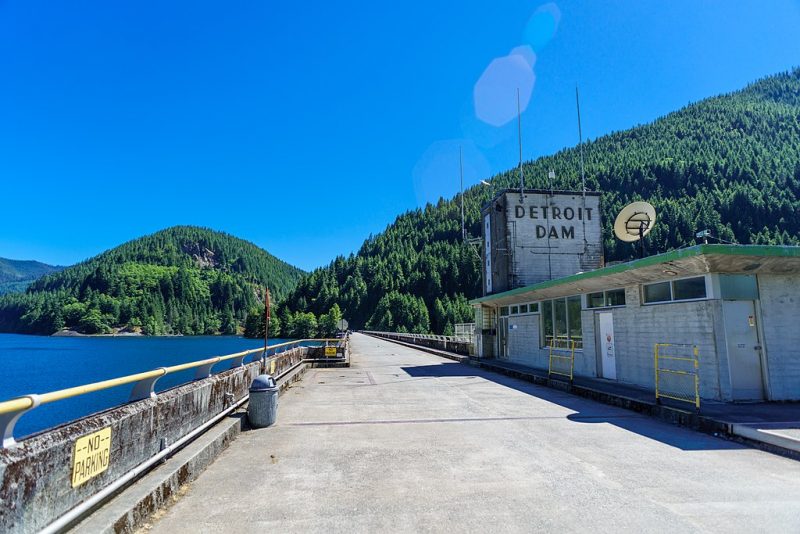Low Water Levels in Detroit Lake Reveal 100-Year-Old Wagon
Detroit Lake is a large reservoir southeast of Salem, Oregon. The man-made lake is held by the Detroit Dam on the North Santiam River. The beautiful scenery and the bustling culture of the marinas surrounding it are well-known in the area.

The Statesman Journal reported in 2016 that the water levels of Detroit Lake fluctuate frequently. Things like snowpack, water consumption by the surrounding areas, and precipitation contribute to the ebb and flow of the water. The level reached a record low of 1,488 feet above sea level in 2015.

A drop in the sea level had a significant effect, with many docks becoming grounded and recreational activities limited.
Fortunately, there’s more to the lake than just what’s on the surface.

When the lake drained to 143 feet below its normal capacity in October of 2015, the local sheriff’s deputy, Dave Zahn, of Marion County Sheriff’s department ventured out to find some treasure.
“I went on a treasure hunt down along the river… Then I saw a piece of old history right there.” Zahn told the Journal, recounting the 100-year-old utility wagon that he had found buried in the mud beneath the lake.
Although the discovery excited Zahn, he made sure to wait until the lake was back at capacity to tell anybody about it.
“I was worried about vandalism or people coming out to try and take a part of it,” Zahn said of his decision to delay the information. The cart apparently suffered only minimal damage while underwater as it had been immersed in the low-oxygen environment.

Exposure to oxygen can cause old artifacts to rapidly deteriorate as the metals in them oxidize quickly upon exposure. U.S. Forest Service archaeologist Cara Kelly requested that the exact location of the wagon remain hidden in order to protect it from vandals or other curious visitors.
The wagon appears to be a utility wagon from around the 19th century. It is probably a remnant of Old Detroit, a small town that was abandoned in 1953 when the valley was flooded to form the lake. An inscription on a cast iron plate on the wagon states that it was made by the Milburn Wagon Company of Toledo, Ohio.

In 1875, Milburn was the largest wagon manufacturer in the world. The inscription helped a historical organization in Ohio date a similar wagon to around 130 years ago.
According to Frances Thomas, president of the North Santiam Historical Society, the Wagon was probably simply abandoned by its owner; but it could have been used in a number of historical projects such as the railroad construction of the late 1800s.
Old Detroit was a 200-person construction camp dedicated to building the Oregon Pacific Railroad. It existed from 1880 to 1952. The owners intended to have the railroad construction pass through the cascade mountains to meet the Transcontinental Railroad, but the plans never reached fruition.

After construction of the dam was completed in 1953, the valley was flooded, covering up most of the remains of the old towns and railways beneath it. The Detroit Dam was constructed as part of a plan to curb flooding in the area and help produce electricity.
Records show that, while the citizens of Old Detroit were understandably upset by the prospect of losing their homes, their anger only amounted to a petition for a new plot of land on which to rebuild the city.
Interestingly enough, the wagon at the bottom of the lake was found next to a strange concrete-lined, octagonal hole dug into the mud, which has yet to be identified.





